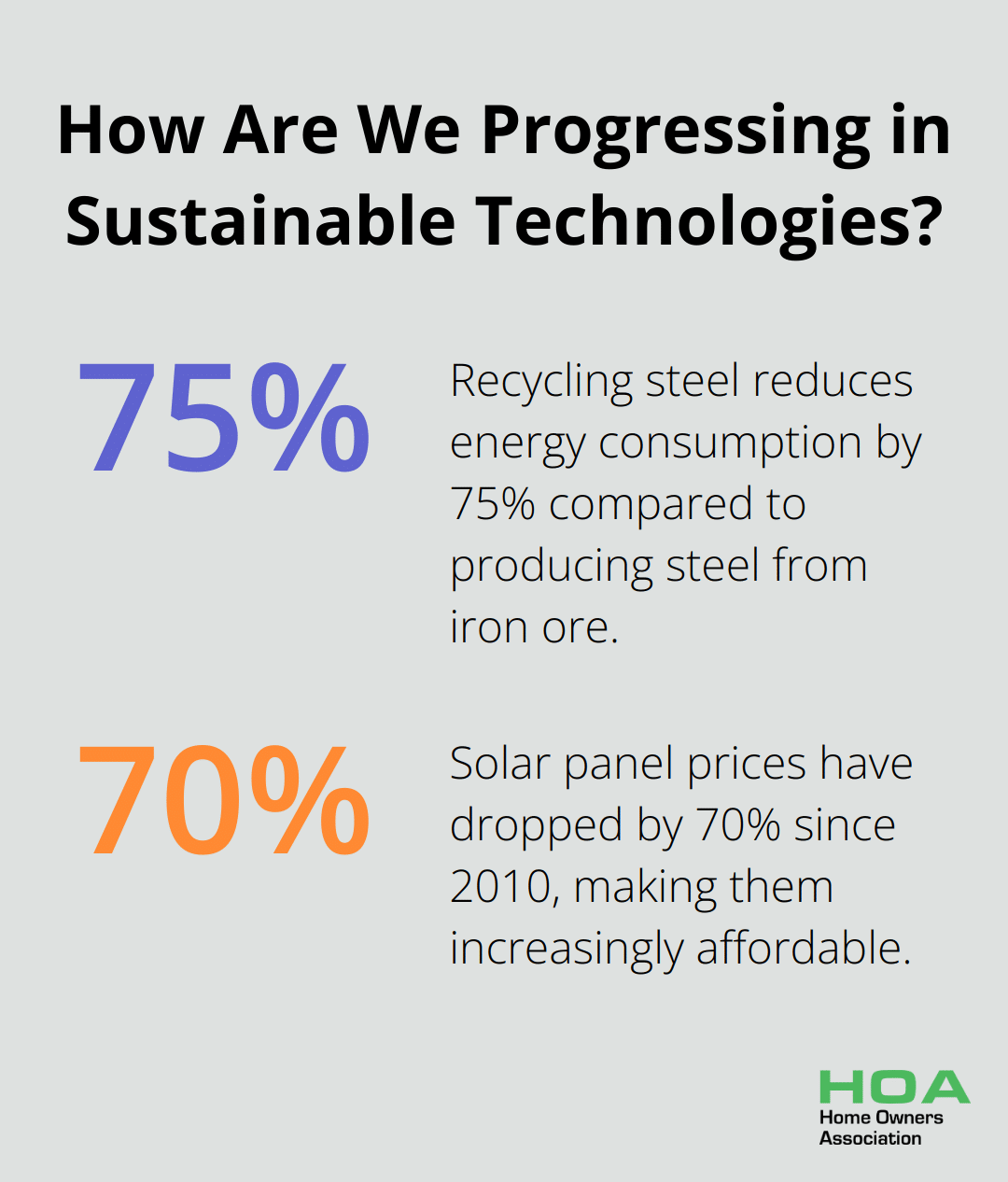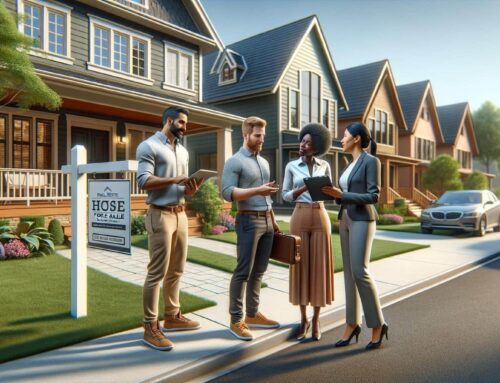
At Home Owners Association, we recognize the growing importance of sustainable practices in building and construction. The construction industry has a significant impact on the environment, and it’s our responsibility to minimize that impact.
Sustainable construction techniques not only reduce environmental harm but also offer long-term benefits for building owners and occupants. In this post, we’ll explore the advantages of sustainable construction and provide practical strategies for implementation.
Why Sustainable Construction Matters
Sustainable construction practices revolutionize the building industry, offering numerous benefits that extend beyond environmental protection. These practices reshape the construction landscape across Australia, impacting various aspects of the industry and society.
Environmental Impact Reduction
The construction sector contributes significantly to landfill waste and greenhouse gas emissions. Sustainable practices address these issues directly:
-
Waste Reduction: Since 2014–15 there has been sustained improvement in recycling and a declining trend in waste to landfill in Western Australia. The use of recycled materials and effective on-site waste management strategies can reduce this figure substantially.
-
Emissions Control: Buildings account for 30% of all greenhouse gas emissions in the U.S. (a statistic likely similar in Australia). Energy-efficient designs and renewable energy systems in sustainable construction directly combat this issue.
Cost Savings for Building Owners
Sustainable construction offers long-term financial benefits, despite potentially higher initial investments:
-
Operational Cost Reduction: Energy-efficient buildings can cut operational costs dramatically. Proper insulation and energy-efficient HVAC systems can reduce energy consumption by up to 50%, resulting in significant savings on utility bills.
-
Increased Property Value: Sustainable buildings often command higher market values and incur lower maintenance costs, enhancing their long-term economic viability.
Occupant Health and Well-being
Sustainable buildings benefit not only the planet but also the people who inhabit them:
-
Improved Indoor Environment: These structures often boast better indoor air quality, more natural lighting, and use non-toxic materials. These features contribute to improved physical and mental health for occupants.
-
Enhanced Productivity: Studies show that employees in green buildings report fewer sick days and higher productivity levels. (This fact underscores the importance of sustainable design in both residential and commercial construction.)
Industry Growth and Innovation
The sustainable construction sector drives economic growth and technological advancement:
-
Job Creation: More than 2.3 million U.S. workers are taking home $134 billion annually in large part because of green building programs like LEED. This economic impact likely mirrors in Australia, creating new job opportunities and fostering innovation.
-
Technological Advancements: The push for sustainability spurs the development of new materials, construction techniques, and energy systems, advancing the entire construction industry.

As environmental challenges persist, the importance of sustainable construction will only grow. This shift towards sustainability represents more than a trend; it’s a necessary evolution in our approach to building. The next section will explore key sustainable construction techniques that builders and homeowners can implement to reap these benefits.
Practical Techniques for Sustainable Construction
Eco-Friendly Materials: The Foundation of Green Building
The choice of materials forms the cornerstone of sustainable construction. Recycling steel reduces energy consumption by 75% compared to producing steel from iron ore. Bamboo, a rapidly renewable resource, grows up to 91 cm per day and reaches maturity in just 3-5 years, making it an excellent choice for flooring and structural elements.

Hempcrete, a biocomposite made from hemp hurds and lime, offers another innovative solution. This carbon-negative material absorbs more CO2 during its growth than it emits during production. It provides excellent insulation and moisture regulation, which contributes to energy efficiency and indoor air quality.
Energy Efficiency: Designing for the Future
Energy-efficient design stands at the heart of sustainable construction. Passive solar design maximizes natural light and heat, reducing heating and cooling needs by up to 40%. This approach involves strategic placement of windows, thermal mass, and shading devices.
Renewable energy systems play a key role in sustainable buildings. Solar panel prices have dropped by 70% since 2010, making them increasingly affordable. A typical 5kW system can save homeowners up to $1,500 annually on electricity bills. Wind turbines offer another option, particularly effective in coastal areas with higher wind speeds.
Water Conservation: Every Drop Counts
In Australia’s dry climate, water conservation takes on paramount importance. Rainwater harvesting systems can reduce mains water use by up to 100% for toilet flushing, laundry, and garden irrigation. These systems typically pay for themselves within 5-10 years through reduced water bills.
Greywater recycling systems present another effective strategy. They can lead to increased resilience and adaptability of local water systems, reduction in transport costs, and achievement of fit-for-purpose water use.
Waste Management: Turning Trash into Treasure
Effective waste management during construction proves crucial. The construction industry generates about 20.4 million tonnes of waste annually in Australia. Proper sorting and recycling practices on-site can divert up to 90% of construction waste from landfills.
Prefabrication revolutionizes waste reduction in construction. Manufacturing building components off-site in controlled environments can reduce waste by up to 90% compared to traditional on-site construction methods. This approach also reduces construction time and improves quality control.
The implementation of these sustainable construction techniques not only benefits the environment but also creates healthier, more efficient buildings. As the construction industry evolves, overcoming challenges in sustainable practices becomes the next frontier. The following section will explore these obstacles and provide strategies to surmount them, paving the way for a greener future in construction.
Overcoming Obstacles in Sustainable Construction
Initial Cost Considerations
The perception of higher upfront costs often deters sustainable construction adoption. However, the Green Building Council of Australia (GBCA) is committed to driving the shift to a sustainable property industry in Australia. While the exact cost difference between green and conventional buildings is not specified in the provided information, the GBCA’s efforts suggest that the benefits of green buildings outweigh potential additional costs.

To mitigate initial costs:
- Prioritize passive design strategies that don’t require additional technology.
- Introduce sustainable features gradually, starting with quick return-on-investment options.
- Explore government incentives for green building projects.
Expertise and Awareness Gaps
Limited knowledge of sustainable practices can hinder their implementation. To address this:
- Invest in staff training. The Green Building Council of Australia offers various courses and certifications.
- Partner with sustainability consultants on initial projects to build in-house expertise.
- Join industry associations focused on sustainable construction to stay updated on best practices.
Certification Complexities
Green building certifications add value to projects but can be complex to navigate. The Green Star rating system, developed by the Green Building Council of Australia, aims to quantify the impact of the Green Star rating system on Australia’s built environment.
To streamline the certification process:
- Engage certification bodies early in project planning.
- Integrate certification requirements into project management systems from the start.
- Use specialized software tools to track and manage green building certification requirements.
Balancing Sustainability with Project Demands
Reconciling sustainability goals with budget constraints, timelines, and client preferences can be challenging. Solutions that meet multiple objectives include:
- Conduct thorough stakeholder engagement to align sustainability goals with other project requirements.
- Use Building Information Modeling (BIM) to optimize designs for sustainability and other project needs.
- Implement lean construction principles to reduce waste and improve efficiency.
Industry Resistance to Change
Some sectors of the construction industry resist adopting new sustainable practices. To overcome this:
- Showcase successful sustainable projects and their long-term benefits.
- Provide clear, data-driven evidence of the economic advantages of sustainable construction.
- Foster a culture of innovation and continuous improvement within construction firms.
Final Thoughts
Sustainable practices in building and construction have become essential for the future of our industry and planet. These practices offer numerous benefits beyond environmental protection, including long-term cost savings, enhanced occupant health, and industry innovation. The techniques we’ve discussed, from eco-friendly materials to energy-efficient designs, provide practical steps for builders and homeowners to implement sustainable construction.

We must commit to incorporating sustainable practices into every project, regardless of size. This commitment begins with education, continues through implementation, and grows with ongoing innovation. The construction community has a responsibility to lead this change, creating structures that benefit occupants and contribute positively to our environment.
For those in Melbourne, Australia, seeking sustainable home projects, the Home Owners Association offers valuable resources and support. Their expertise in the local market can help navigate the complexities of sustainable construction while providing exclusive benefits and savings. We encourage you to take decisive action and build a sustainable future, one project at a time.





